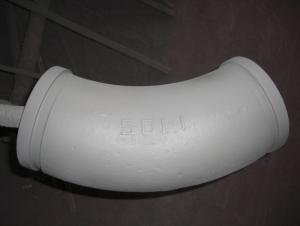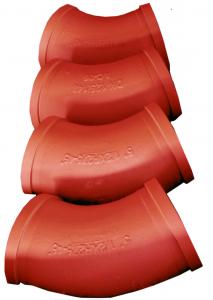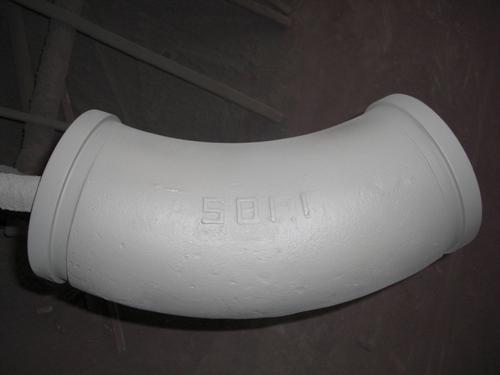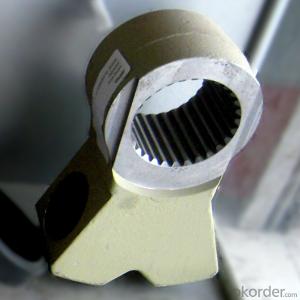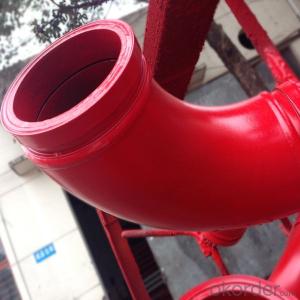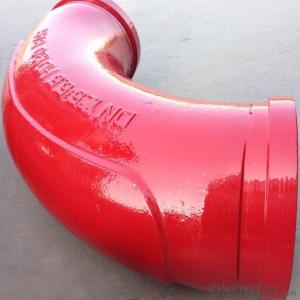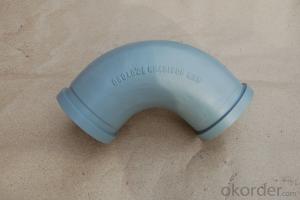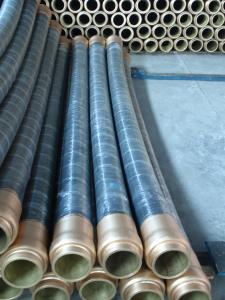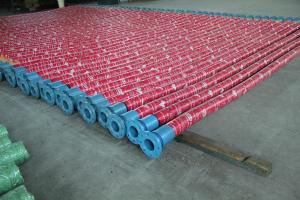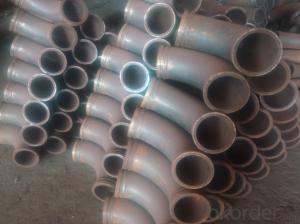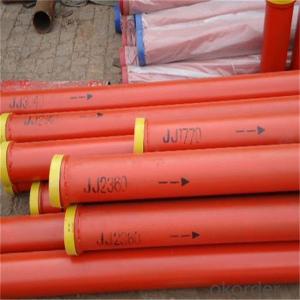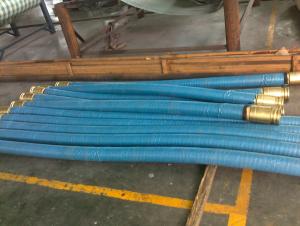Concrete Pump Truck Parts Elbow Bend DN100 R275 45DGR 114.3MM Mn13-4 Casting
- Loading Port:
- China Main Port
- Payment Terms:
- TT OR LC
- Min Order Qty:
- -
- Supply Capability:
- -
OKorder Service Pledge
Quality Product, Order Online Tracking, Timely Delivery
OKorder Financial Service
Credit Rating, Credit Services, Credit Purchasing
You Might Also Like

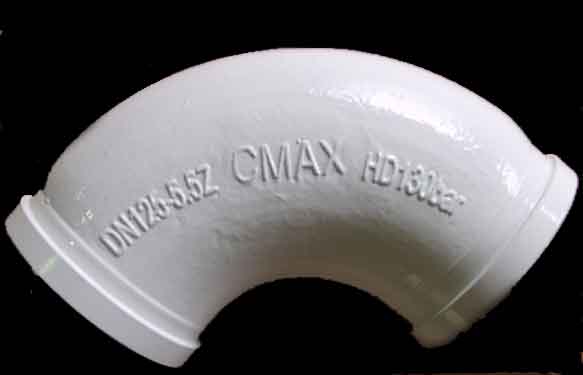
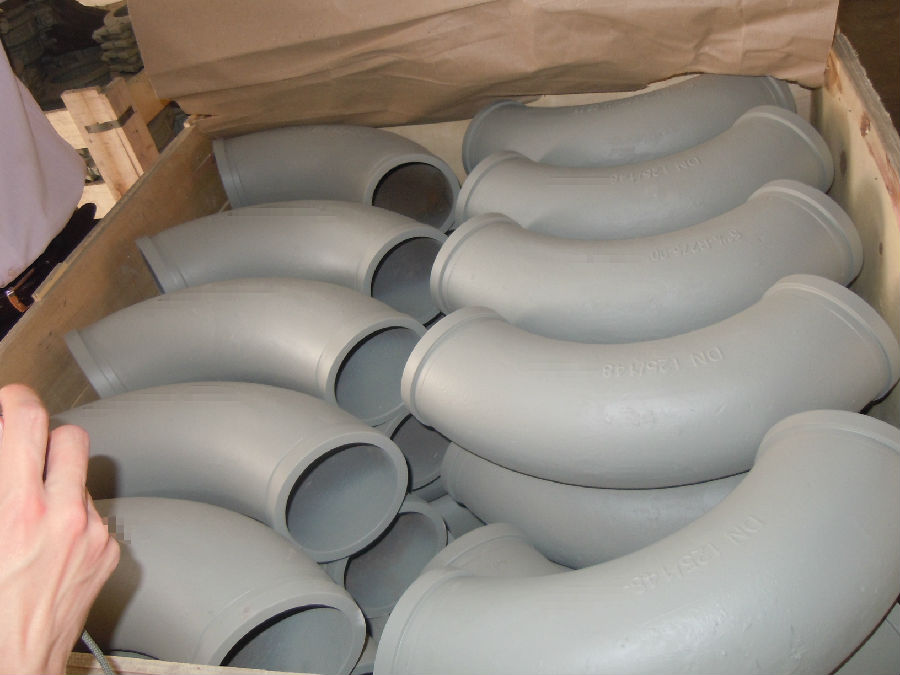
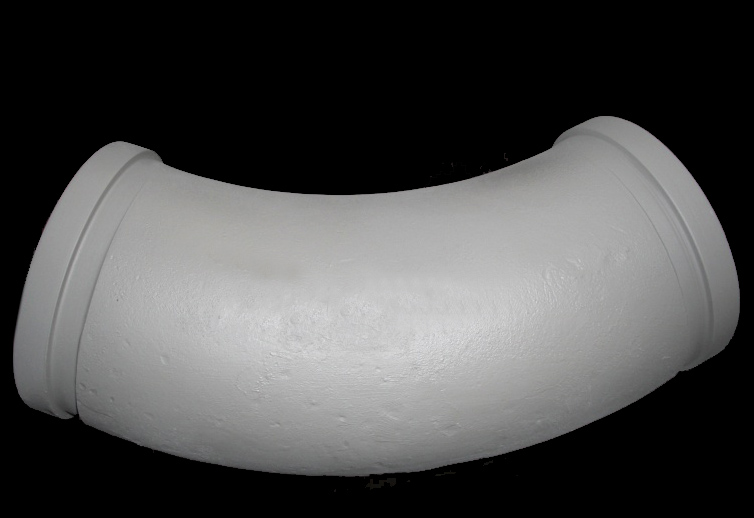
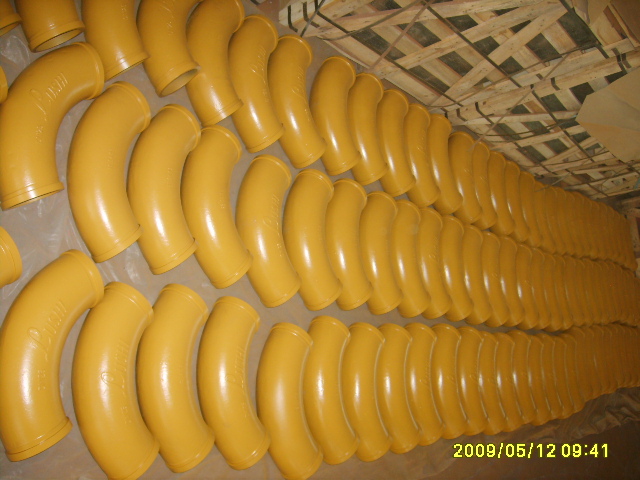
Product Description:
Product Name: Concrete Pump ELBOW DN100
1. Specification of Concrete Pump ELBOW DN100
Dimensions: DN100
Radius: 275mm
Flange: SK, ZX, F&M
Degree: 45
Material: #20 steel, ST52
Thickness: 4.5mm,6mm,7.1mm,7.5mm,10mm,
Working pressure: 180MPa
Notes: total series of concrete pump ELBOW for different brand concrete pump(PUTZMEISTER, SCHWING, CIFA, SANY, ZOOMLION, IHI, KYOKUTO Etc) available from us.
2. Application of Concrete Pump ELBOW DN100
Widely used on concrete pump truck, concrete placing boom, trailer concrete pump etc, for concrete delivery pipe connection.
Our concrete pump bends have been successfully exported to many countries from 1998, Our main markets as below: Middle East, Southeast Asia, America, Brazil, Italy, Russia, South Africa etc
Aiming at the largest concrete pump parts manufacturer, and reliable, professional supplier in China, we can supply concrete pump elbows, delivery pipes, casting or forging couplings, end rubber hoses, rubber pistons, tungsten wear plates, delivery cylinders, and other hydraulic parts, one stop service for your concrete pump parts and accessory business.
3. Package and Delivery of Concrete Pump ELBOW
Every 30pcs put in one seaworthy wooden box, and 20 boxes in one 20feet container.
Product Name: Concrete Pump ELBOW DN100
1. Specification of Concrete Pump ELBOW DN100
Dimensions: DN100
Radius: 275mm
Flange: SK, ZX, F&M
Degree: 45
Material: #20 steel, ST52
Thickness: 4.5mm,6mm,7.1mm,7.5mm,10mm,
Working pressure: 180MPa
Notes: total series of concrete pump ELBOW for different brand concrete pump(PUTZMEISTER, SCHWING, CIFA, SANY, ZOOMLION, IHI, KYOKUTO Etc) available from us.
2. Application of Concrete Pump ELBOW DN100
Widely used on concrete pump truck, concrete placing boom, trailer concrete pump etc, for concrete delivery pipe connection.
Our concrete pump bends have been successfully exported to many countries from 1998, Our main markets as below: Middle East, Southeast Asia, America, Brazil, Italy, Russia, South Africa etc
Aiming at the largest concrete pump parts manufacturer, and reliable, professional supplier in China, we can supply concrete pump elbows, delivery pipes, casting or forging couplings, end rubber hoses, rubber pistons, tungsten wear plates, delivery cylinders, and other hydraulic parts, one stop service for your concrete pump parts and accessory business.
3. Package and Delivery of Concrete Pump ELBOW
Every 30pcs put in one seaworthy wooden box, and 20 boxes in one 20feet container.
- Q: How can one ensure compatibility between concrete pump spare parts and the pump?
- To ensure compatibility between concrete pump spare parts and the pump, it is essential to follow the manufacturer's guidelines and specifications. This includes sourcing spare parts from authorized dealers or reputable suppliers who specialize in concrete pump equipment. Additionally, maintaining a thorough understanding of the pump's model, make, and technical requirements can help in selecting the correct spare parts. Regular inspection and maintenance of the pump can also help identify any potential issues or parts that may need replacement, ensuring smooth compatibility between the pump and its spare parts.
- Q: How often should concrete pump accumulators be inspected and replaced?
- To ensure proper functioning and prevent potential issues, it is important to regularly inspect concrete pump accumulators. The frequency of inspections will depend on factors such as manufacturer recommendations, usage intensity, and operating conditions. As a general rule, it is recommended to inspect the accumulators at least every six months or after every 500 hours of operation, whichever comes first. However, if the pump is used more frequently or operates under harsh conditions, more frequent inspections may be necessary. During the inspection, check the accumulators for visible signs of wear or damage, such as leaks, cracks, or corrosion. Additionally, test the pressure levels and performance to ensure they meet the required standards. When it is time for replacement, it is best to follow the manufacturer's recommendations. Typically, accumulators have a lifespan of around 3 to 5 years, but this can vary based on maintenance, usage, and environmental conditions. If any significant issues are found during the inspection or if the accumulators have reached their recommended lifespan, it is advisable to promptly replace them to avoid potential failures and ensure the safety and efficiency of the concrete pump.
- Q: Can I get spare parts for both concrete pumps with and without pressure washers?
- Spare parts for both concrete pumps with and without pressure washers are readily available. Numerous manufacturers and suppliers offer an extensive selection of spare parts for concrete pumps, even those equipped with pressure washers. These spare parts consist of various components, including hoses, nozzles, valves, cylinders, seals, filters, and other necessary accessories for proper concrete pump operation. It is crucial to maintain and promptly replace worn-out or damaged parts to guarantee optimal performance and long-lasting equipment, regardless of whether your concrete pump has a pressure washer or not.
- Q: What is the purpose of a concrete pump agitator motor?
- The objective of a concrete pump agitator motor is to guarantee the uniformity and excellence of the concrete mixture being transported. Its role involves ensuring that the concrete mixture remains well-blended and prevents any settling or separation during the pumping procedure. The agitator motor aids in maintaining a consistent and homogeneous mixture, which is essential for achieving sturdy and long-lasting concrete structures. Through continuous agitation of the concrete inside the pump, the motor assists in averting any obstruction or congestion that may potentially disrupt the pumping operation. In general, the purpose of a concrete pump agitator motor is to optimize the efficiency and effectiveness of the concrete pumping process, ultimately leading to improved construction outcomes.
- Q: Can a concrete pump wear plate be repaired or does it need to be replaced entirely?
- A concrete pump wear plate can be repaired in certain situations, but sometimes it may need to be replaced entirely. The decision whether to repair or replace the wear plate depends on the extent of the damage and the overall condition of the plate. Minor damages such as small cracks, dents, or worn out areas can often be repaired using suitable techniques. For example, if there are small cracks, they can be welded or filled with an appropriate epoxy or filler material. Similarly, if there are dents or worn out areas, they can be filled and smoothened to restore the plate's functionality. However, if the wear plate has suffered significant damage, such as extensive cracks, severe corrosion, or large holes, it may be better to replace the plate entirely. This is because repairing such extensive damage may compromise the structural integrity and effectiveness of the wear plate. In these cases, replacing the wear plate ensures the optimal performance and safety of the concrete pump. It is crucial to assess the condition of the wear plate carefully before deciding whether to repair or replace it. Consulting with experts or professionals familiar with concrete pump maintenance can provide valuable guidance in making the right decision. Furthermore, regular maintenance and inspection of the wear plate can help identify any potential issues early on, allowing for timely repairs or replacements to prevent further damage and ensure the efficient operation of the concrete pump.
- Q: How often should hopper agitator shafts be inspected or replaced in a concrete pump?
- To ensure optimal performance and prevent potential breakdowns, it is important to regularly inspect and maintain the hopper agitator shafts in a concrete pump. The frequency of inspection or replacement depends on factors such as pump usage and operating conditions. As a general rule, it is recommended to inspect the hopper agitator shafts every three to six months. During the inspection, check for signs of wear, damage, or misalignment. If any issues are found, take appropriate measures such as lubricating, realigning, or replacing damaged parts. However, it is crucial to consider the intensity of use, the materials being pumped, and the overall condition of the pump when determining the inspection frequency. For example, if the pump is used heavily or operates continuously, it may be necessary to inspect the agitator shafts on a monthly basis. Regular maintenance and inspection of hopper agitator shafts not only ensure smooth operation but also extend the equipment's lifespan. Detecting and resolving issues in a timely manner can prevent costly repairs or downtime in the future. Additionally, following the manufacturer's maintenance recommendations and guidelines can optimize performance and reliability.
- Q: How often should hopper pins be inspected or replaced in a concrete pump?
- To guarantee the safe and efficient operation of concrete pump equipment, it is imperative to regularly inspect and replace hopper pins. The frequency of these inspections and replacements depends on various factors, including the concrete pump's usage and the condition of the hopper pins. As a general rule, it is advised to inspect hopper pins every three to six months or after every 400 to 600 hours of operation. However, it is crucial to note that this timeframe can differ depending on the intensity and volume of concrete pumping activities. During the inspection, it is necessary to carefully examine the hopper pins for any indications of wear, damage, or deformation. If any pins display significant signs of wear, such as cracks, elongation, or excessive corrosion, they should be promptly replaced to prevent potential accidents or equipment failure. Maintaining the structural integrity of the concrete pump and ensuring the safety of operators and the surrounding environment rely heavily on regular inspection and replacement of hopper pins. It is advisable to consult the manufacturer's guidelines or seek professional advice to determine the specific schedule for inspection and replacement, considering the make and model of the concrete pump.
- Q: How do I properly adjust and control flow rates in concrete pump spare parts?
- To properly adjust and control flow rates in concrete pump spare parts, there are a few key steps to follow: 1. Understand the equipment: Familiarize yourself with the specific concrete pump spare parts you are working with. Read the user manual and refer to any documentation provided by the manufacturer. This will help you gain a comprehensive understanding of the equipment's capabilities and how to adjust flow rates effectively. 2. Check the pump settings: Before starting any concrete pumping operation, ensure that the pump settings are properly configured. This includes checking the hydraulic pressure, engine RPM, and any other relevant settings. Make sure all valves and controls are in the correct position for the desired flow rate. 3. Monitor the pump speed: The speed of the pump directly affects the flow rate of the concrete. Different concrete mixtures may require different pump speeds to achieve the desired flow rate. Adjust the engine RPM accordingly, referring to the manufacturer's recommendations and any specific requirements for the project. 4. Adjust the pump stroke: Most concrete pumps have adjustable pump strokes to control the flow rate. By changing the length of the stroke, you can increase or decrease the volume of concrete being pumped. Experiment with different stroke lengths to find the optimal flow rate for your specific application. 5. Use the control panel: Many concrete pumps come equipped with a control panel that allows for precise adjustment of flow rates. Take advantage of these features to fine-tune the flow rate. Use the control panel to monitor the pump's performance and make any necessary adjustments to maintain a consistent flow. 6. Regularly inspect and maintain the equipment: Proper maintenance is crucial to ensure the accurate adjustment and control of flow rates. Regularly inspect the concrete pump spare parts for any signs of wear or damage. Clean and lubricate the components as recommended by the manufacturer. A well-maintained pump will operate more efficiently and provide more accurate control over flow rates. By following these steps, you can properly adjust and control flow rates in concrete pump spare parts. Remember to always prioritize safety and consult the manufacturer's instructions and guidelines for specific recommendations and considerations.
- Q: How does a concrete pump hopper grate prevent clogs?
- Preventing clogs in the concrete pump system is a crucial function of the hopper grate. Acting as a filter, it permits only the necessary aggregate size to pass through, while capturing any excess debris or large particles that could cause blockages. Strategically placed openings or grids in the grate catch these unwanted materials. When pouring the concrete mixture into the hopper, the grate serves as a barrier. It allows only the appropriate material size to pass through, while obstructing any larger or undesirable debris. This ensures a smooth flow of concrete through the pump system, preventing any disruptions or jams during construction. Furthermore, the grate is typically constructed from durable materials like steel or high-density polyethylene. These materials are resistant to damage and wear, allowing the grate to withstand the high-pressure environment and continuous operation without deformation. Regular maintenance and cleaning of the hopper grate are also essential to prevent clogs. By inspecting and removing any accumulated debris or build-up on a regular basis, operators can ensure that the grate remains clear and fully functional, thereby preventing potential clogging issues. In conclusion, the concrete pump hopper grate acts as a filter to prevent clogs, allowing only the necessary aggregate size to pass through while capturing larger particles and debris. Its design and durable material ensure a smooth flow of concrete, minimizing the risk of blockages and maintaining construction efficiency.
- Q: What are the common signs of wear and tear in a concrete pump cylinder?
- Some common signs of wear and tear in a concrete pump cylinder include: 1. Leaking oil or hydraulic fluid: If you notice oil or hydraulic fluid leaking from the cylinder, it is a clear sign of damage or wear. This can be caused by cracks, worn seals, or damaged gaskets. 2. Reduced pumping efficiency: A worn cylinder may result in decreased pumping efficiency, meaning the concrete pump may not be able to deliver the same amount of concrete as before. This can be due to a decrease in the cylinder's internal diameter or worn piston rings. 3. Increased noise and vibration: As the cylinder wears down, it may create more noise and vibration during operation. This can indicate misalignment, loose components, or damaged internal parts. 4. Rough or uneven concrete output: A worn cylinder can lead to a rough or uneven output of concrete. This can be caused by an irregular internal surface or damaged piston rings, affecting the smooth movement of the piston. 5. Excessive heat generation: If the concrete pump cylinder is worn, it may generate more heat during operation. This can be caused by increased friction between moving parts, which can further contribute to accelerated wear and tear. 6. Visible damage or corrosion: Inspecting the surface of the cylinder can reveal visible signs of wear and tear, such as scratches, dents, or corrosion. These damages can compromise the integrity of the cylinder and may require repair or replacement. It is important to regularly inspect the concrete pump cylinder and address any signs of wear and tear promptly to avoid further damage and ensure the pump's optimal performance.
Send your message to us
Concrete Pump Truck Parts Elbow Bend DN100 R275 45DGR 114.3MM Mn13-4 Casting
- Loading Port:
- China Main Port
- Payment Terms:
- TT OR LC
- Min Order Qty:
- -
- Supply Capability:
- -
OKorder Service Pledge
Quality Product, Order Online Tracking, Timely Delivery
OKorder Financial Service
Credit Rating, Credit Services, Credit Purchasing
Similar products
Hot products
Hot Searches
Related keywords
